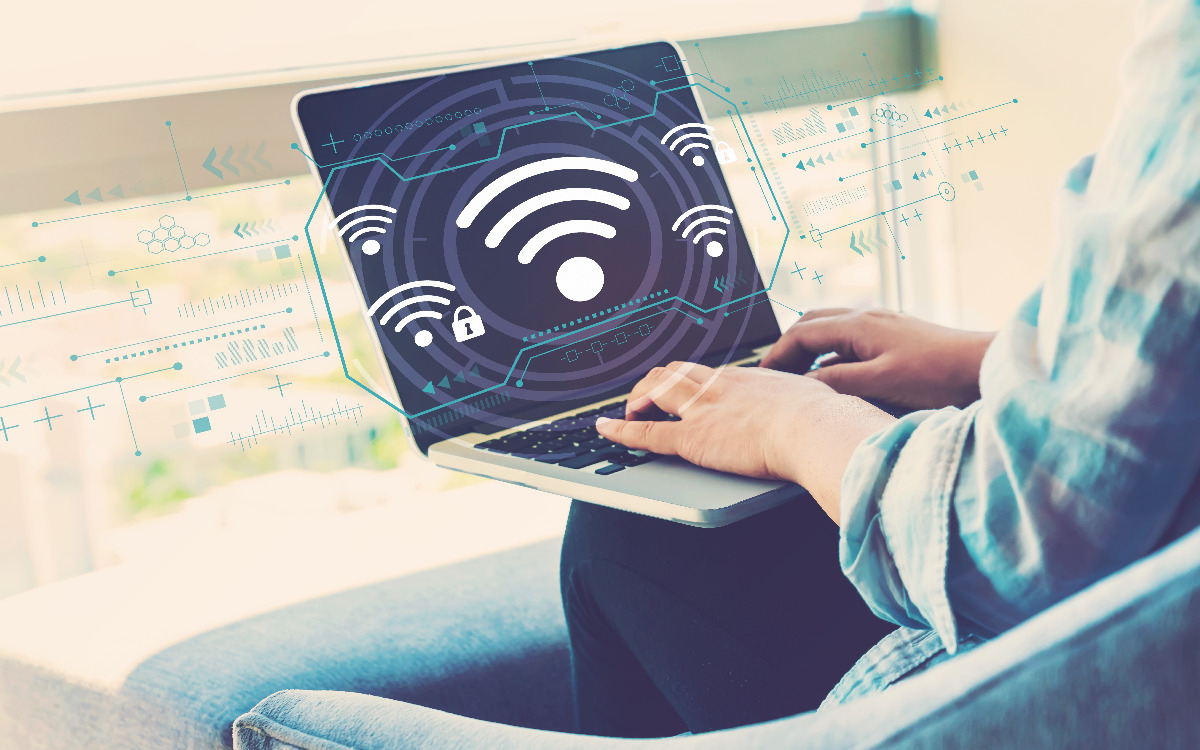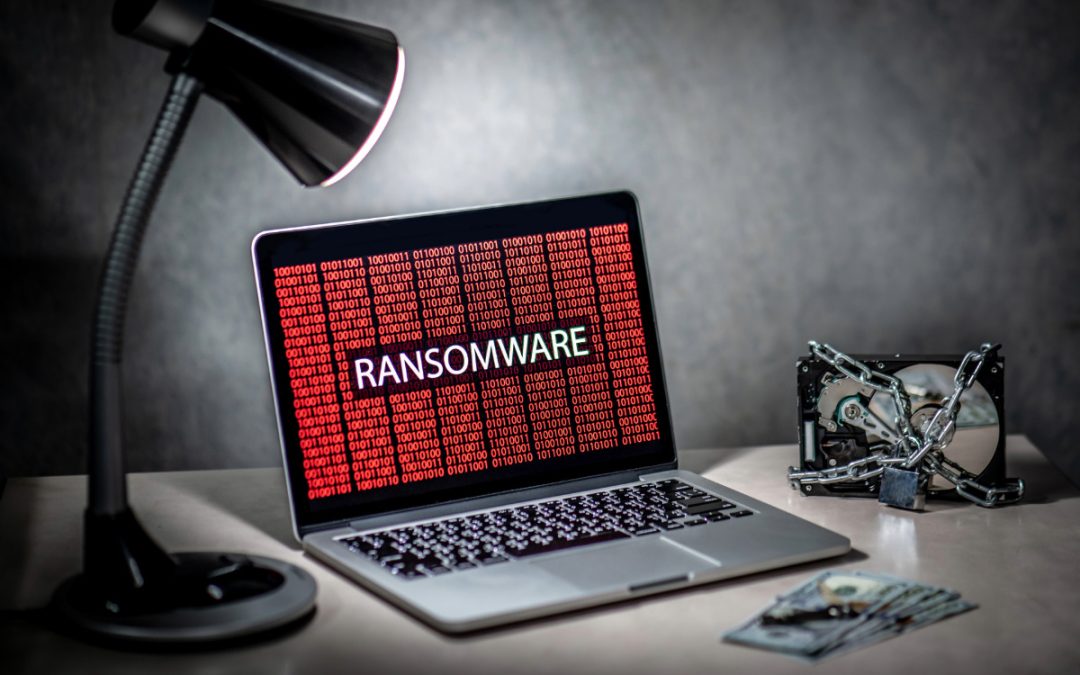Wi-Fi network security is an essential but often overlooked part of running a business. Since most users don’t understand how attacks work and why poor network security is a risk, they assume everything is fine as long as it works normally. While Wi-Fi networks can do more than provide an internet connection, with an estimated 5.33 billion internet users in 2023, that’s one of its main roles.
Unfortunately, hack attempts aren’t always that obvious. Many types of Wi-Fi network attacks, ranging from eavesdropping to malware distribution, can impact the target differently. Since data is one of society’s most valuable assets, understanding the role of Wi-Fi network security is vital to keeping everyone safe.
Table of Contents
Having a Secure Wi-Fi Network Important
Many Threats Can Target Wi-Fi Networks
Passwords Can Impact Wi-Fi Network Security
When Using Public WI-FI, Assume Everything Is Tracked
Mobile Data Is Safer Than Wi-Fi for Smartphones
Steps You Can Take To Secure Your Wi-Fi Network
Conclusion
What Is a Wi-Fi Network?
A Wi-Fi network is a local wireless connection that allows devices like computers and smartphones to connect with the internet or to each other. If a device stays within range of the network, it can maintain its connection as people move around. They generally have stronger, faster, and more reliable connections than mobile data. However, once they’re out of range of the network, then they disconnect from everything.
Having a Secure Wi-Fi Network Important
A secure Wi-Fi network is essential for protecting personal and business information and improving user privacy. An unsecured network is vulnerable to many types of attacks and unauthorized access. Even if someone isn’t using it to cause harm, they will still use some of the bandwidth, which can slow down internet speeds for everyone else connected.
Many Threats Can Target Wi-Fi Networks
When people think of Wi-Fi network threats, many assume, at most, it’s a pesky neighbor leeching off your internet. Unfortunately, they can be much more damaging than that. We’ll highlight a few key threats businesses must be wary of.
1. Eavesdropping
With this approach, hackers will quietly “listen” to traffic that passes through the network. They may be able to view personal messages, credit card numbers, passwords, and other private information. That isn’t easy to detect, as it has little impact on the performance of devices or the internet.
2. Malware Distribution
If a Wi-Fi network isn’t secure, hackers may be able to use it to distribute malicious files like malware, ransomware, viruses, and spyware to any device connected. While those devices may have security measures of their own, they can be difficult to detect since it’s a roundabout method that may go unnoticed by some automated security systems.
3. Brute Force
A brute force attack is as straightforward as it sounds. They’re most often used to crack weak Wi-Fi network passwords. That’s done by hitting the network with potentially hundreds of thousands of random password guesses until one is correct. While there are measures to prevent these, simply using a strong password is the easiest.
4. Denial of Service (DoS)
Similar to brute force attacks, a DoS attack is designed to deny and disrupt services to users on the network. That’s done by flooding it with more traffic than it can keep up with, causing problems for everybody who’s reliant on that network.
5. Wireless Honeypot
A wireless honeypot is different than a normal attack. Like attracting insects to a pot of honey, it involves a fake Wi-Fi network with a name and credentials that match the real one. That will cause some people to connect to it mistakenly. Since the entire network is fake, anything done on it can be easily tracked and stolen.
Passwords Can Impact Wi-Fi Network Security
Whether it’s a coffee shop or a hotel, if the Wi-Fi password is publicly shared, it’s easy for anyone to access it. Although the odds of a hacker on any given network are low, there’s a higher risk of people connected with infected devices that may collect or unknowingly transmit malicious data.
Even if the Wi-Fi password is kept in a safe place, if it’s easy to guess or reused for multiple things, then it’s not offering as much protection. Many businesses will use fun or clever passwords based on their name or something they provide. For example, a seafood restaurant might use ‘ocean fresh’ for their Wi-Fi. While it’s still better than nothing, it doesn’t provide as much security due to being short and simple.
When Using Public WI-FI, Assume Everything Is Tracked
Businesses that maintain employee-only Wi-Fi networks are often much more secure. However, you lose that protection whenever you connect to a public Wi-Fi network. It’s easiest to assume that anything you do on your phone or computer is tracked with public Wi-Fi. That means, when possible, it’s better not to do banking, access sensitive business data, or other essential tasks until you’re on a more secure connection again. However, with 18% of people using public Wi-Fi for remote work, it continues to be a risk for many businesses.
Mobile Data Is Safer Than Wi-Fi for Smartphones
While it can feel similar for smartphone users, mobile data functions differently than Wi-Fi networks. Mobile data provides a direct connection with no go-between, meaning there’s no concern over someone sharing the same network. Additionally, it’s better encrypted, so even if someone can view the data, it’ll be useless to the thief because only your phone can decrypt it back to usable information. While smartphones can access Wi-Fi networks, in some cases, it’s better to use your mobile data to stay safer.
Steps You Can Take To Secure Your Wi-Fi Network
Whether securing a business or a home network, there are several steps you can take to better protect your network, and everyone connected to it.
1. Don’t Use Default Login Credentials
Your router comes with a default username and password, which are the same for all models from many manufacturers and can be easily found online. You should change these credentials to something original to prevent unauthorized access to your router’s settings.
2. Set a Strong Wi-Fi Password
Using a strong password is always recommended. Even if it’s publicly viewable, such as posted on a sign, that will prevent people from accessing it without walking inside first. It can also be beneficial to routinely change the password, especially if it’s publicly available.
3. Create a Guest Network
If your business or household has regular guests that need Wi-Fi access, setting up a guest network is a good option. Doing so separates all guest traffic and devices from everything used internally. That means even if the guest network is hacked, they won’t have access to the separate secure network.
4. Use WPA3 Encryption
WPA3 is a security protocol that solves many of the flaws with WPA2. It allows for encryption up to 192-bit, which protects against hackers. WPA3 also offers individualized data encryption, which means each device is uniquely encrypted. With 73% of networks still relying on WPA2 as of 2023, there’s a good chance you still need to upgrade.
5. Disable Wi-Fi Protected Setup (WPS)
WPS can be used in two main ways. The first is the push-button, allowing people to press the WPS button on a router and then on their device, which automatically connects the two. The second is creating a device PIN, which is then used to approve the device on the router. Both ways are vulnerable to brute-force attacks, making it better to disable when it’s an option.
6. Regularly Update Your Router’s Firmware
Router manufacturers regularly release updates that can improve performance and fix security holes. Like any cybersecurity strategy, protecting a network is an ongoing battle. For every solution comes a new type of attack. And for each new attack, a different defense is created. Updates are important to keeping users safe, whether it’s a router, software, or other device.
Conclusion
The security of your Wi-Fi network is more than a matter of convenience; it’s a core part of your personal and business protection. Yet, with 23% of people using public Wi-Fi to cut down on cellular data, much of the burden is put onto local companies to protect their customers. As cybersecurity threats continue evolving, a poorly secured network threatens everyone. However, not every business has the resources or expertise to manage it in-house.
That’s where a managed security service provider (MSSP) comes in. They can provide reliable solutions that protect users, monitor for potential threats, and block many attacks. While it’s not an option for everyone, every business should consider it. Whether managing a large company’s infrastructure or keeping your home safe, it’s worth taking the time to protect your network.
Does your business have Wi-Fi network problems or security concerns? If so, let us help you. Get in touch with us via our contact form or call us at +1 (800) 297-8293




